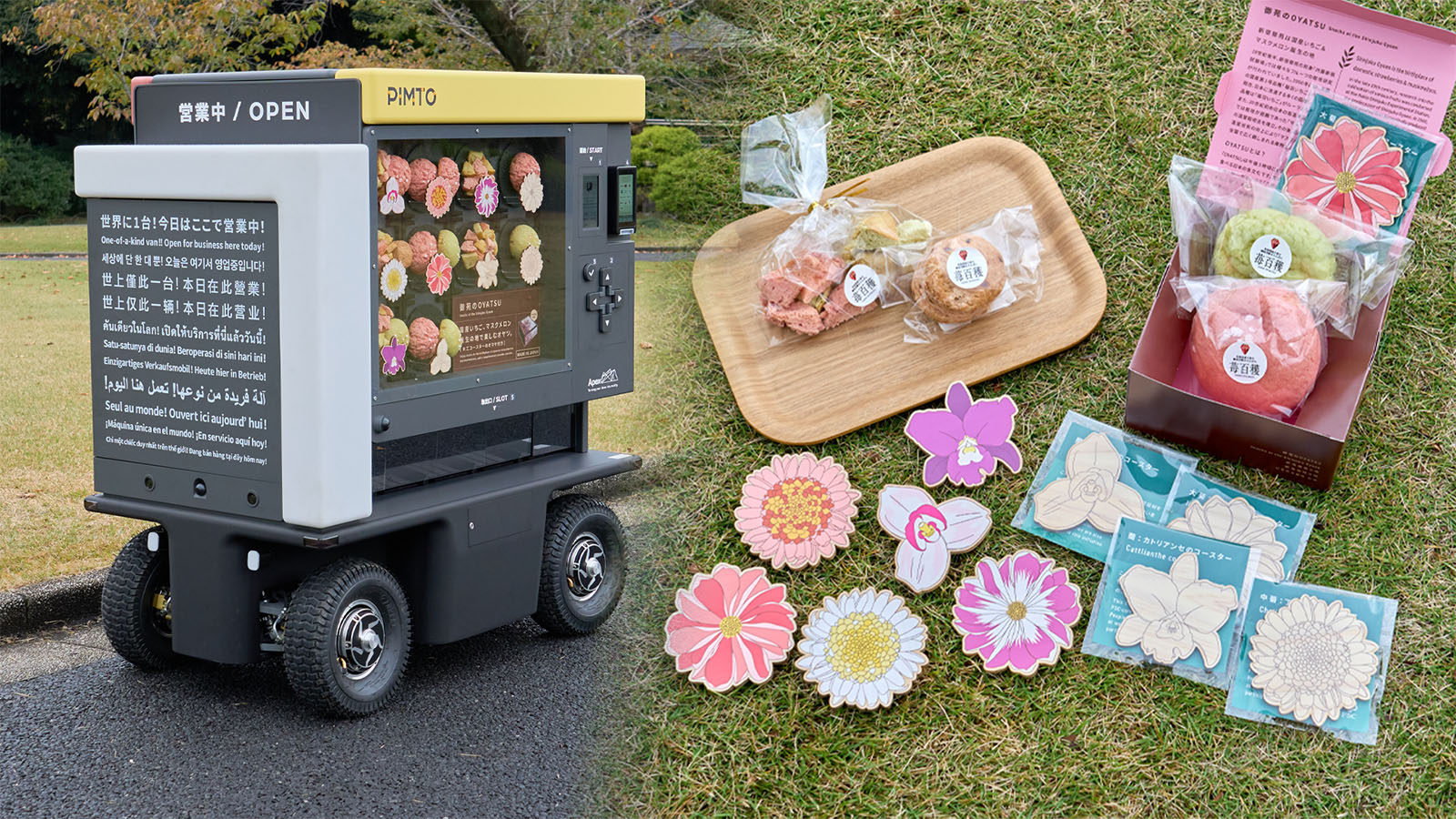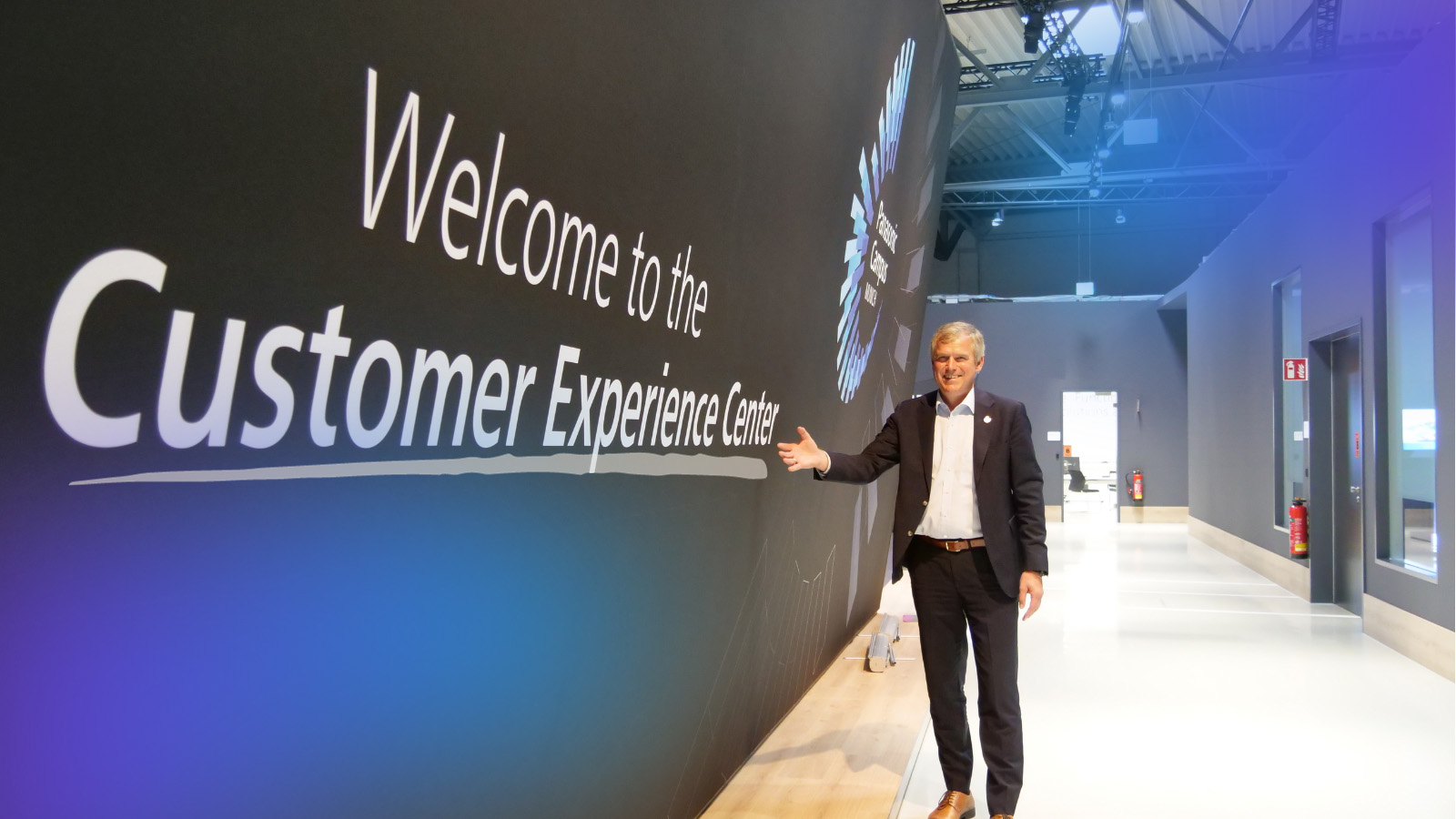
Dec 24, 2024
- Products & Solutions
- Feature Story
- R&D
- AI & Robotics
- Business Solution
- Automotives & Mobility
- Diversity Equity & Inclusion (DEI)

The B2B segment is a key driver of Panasonic’s business in Europe, and is led by operating companies such as Panasonic Industry and Panasonic Connect. While Panasonic enjoys a strong reputation in Japan and Asia, in Europe it is primarily known for consumer products. The European region is also a highly complex market, consisting of many countries with unique cultures, languages, and business practices.
To make Panasonic’s relatively “invisible” B2B products and solutions “visible” to customers and consumers in Europe and effectively communicate its brand promises, Panasonic opened the Customer Experience Center (CXC) at Munich Ottobrunn in Germany. Since its launch in 2020, CXC has been driving continuous innovation and collaboration with B2B customers, trade partners, developers, startups, and universities across Europe, and bringing added value to our B2B businesses in the region.
Panasonic Newsroom Global (PNRG) recently visited the facility and spoke with Johannes Spatz (President of Panasonic Industry Europe), Alexander Schultz-Storz (Director of Innovation & Collaboration at Panasonic Industry Europe), and Petra Lessau (Senior Manager of Trade Shows/Events/Digital Events at Panasonic Marketing Europe) to explore the background of CXC and recent developments.
CXC is strategically located at the heart of Panasonic Campus Munich, a 20,000-square-meter complex to the east of Munich that is home to seven Panasonic B2B-dedicated operating companies, including Panasonic Industry’s European HQ, as well as students from the Technical University of Munich (TUM), and startups.

Panasonic Campus Munich
“The idea was to create a complete campus—including not just Panasonic but also external companies and universities—to nurture the lifeblood of innovation. The facility is designed as a place where a variety of ideas, different experiences, and different cultures come together, fostering meaningful exchanges and promoting further development,” explained Spatz.
“The idea was to create a complete campus
to nurture the lifeblood of innovation”

Johannes Spatz, President, Panasonic Industry Europe
CXC plays a crucial role within the facility, connecting the broad spectrum of players housed at the Campus with B2B stakeholders/customers. “The CXC is more than a showroom,” said Lessau, who as project manager led CXC’s implementation. “It was ambitiously planned to combine four components: showroom, lab facilities, offices, and open meeting spaces. All four functions had to be integrated within a single location.”
“The CXC is more than a showroom”
For many, CXC betrays Panasonic’s rather sober image—in a good way. Visitors are greeted by an open exhibition space with exposed steel ceilings, a public area with stadium-like wooden seats, images of Panasonic founder Konosuke Matsushita, and graffiti-like signs on the walls. “We used wood to express openness and create a warm atmosphere for such a technical environment,” said Lessau.

“I really love it when guests open the door to CXC, enter and say, ‘WOW!’ Customers are impressed by the design and the wide range of products on display and ask, ‘Is this Panasonic?’,” said Spatz. Echoing his comments, Schultz-Storz noted: “From startup students to senior corporate executives, almost everyone who enters the building says ‘WOW’ in reaction to CXC’s lighting or design. They feel a positive vibe.”
“I really love it when guests open the door to CXC,
enter and say, ‘WOW!’”

Spatz and Schultz-Storz celebrating Lessau’s contribution to CXC
CXC was born from an empty factory space and built with amazing speed during the pandemic. “The project was implemented during COVID in 2020. Availability of materials and labor, and regulations around COVID, made planning and budget management a real challenge. So, we put our heads together and discussed the various possibilities,” recalled Lessau, who came to the project with extensive experience leading global exhibitions and events such as IFA, the worldwide largest consumer electronics show, held in Berlin Germany, Panasonic Convention, the pan-European product launch event held annually in different major European cities, and Photokina, one of the biggest tradeshows for photography, video and imaging launched for the first time in 1950. “My team and I had expertise building trade show stands, which are only used for a couple of days. But CXC is permanent. So we were challenged to come up with a space that has the flexibility to adapt to new exhibits without the need to rebuild the entire space.”
“Construction of CXC was
completed within a mere four months during COVID”

Against all odds, Lessau and her team rolled up their sleeves and construction was completed in November 2020—a mere four months later. Due to the pandemic, CXC was initially restricted to virtual events and online seminars, but in March 2021, the doors were opened to face-to-face meetings and events.
Since then, CXC has been serving as a platform that brings together Panasonic, B2B stakeholders, customers, startups, and students in a single place for events and seminars. “In 2020, we initially planned to host 50 events or guest tours a year. But in 2021, we hosted 111, including 79 customer visits, and in 2022, we held 156 events—including 105 customer visits and 2,553 guests. That’s two to three events every week,” said Schultz-Storz.

Light fixtures displayed at IFA2018 have been recycled and reused in the CXC lounge area
The role of CXC, in a word, is to make Panasonic’s “invisible” B2B key competencies “visible” to customers, functioning as a one-stop facility for exploring potential collaborations and bridging the gap between fresh ideas and practical applications.
“This kind of place had never existed before at Panasonic in Europe. We had no place to display B2B technologies or demonstrate what B2B means to Panasonic,” said Schultz-Storz. The exhibition is carefully designed to introduce visitors to six key Panasonic businesses and competencies—Mobility, Factory Automation, Home, Co-Creation, Retail and Public—as they walk through the space.
“The role of CXC is to make Panasonic’s
invisible B2B competencies visible”
In the Mobility area, for example, core Panasonic electric vehicle technologies are showcased, with a digital screen explaining how these technologies work together to power electric vehicles.

Schultz-Storz explaining EV-related competencies and devices
The exhibition space is fully integrated with the co-creation and laboratory areas, where Panasonic encourages visiting customers to transform their ideas into practical applications. “CXC exhibitions stimulate ideas and then help customers prove these ideas in the co-creation or laboratory spaces,” said Spatz.

The co-creation space is designed to help customers experiment with tool kits
Since the launch of CXC, Panasonic has been experiencing a new style of relationship with customers based on co-creation. “Our customers sometimes come back again and again over a week or two weeks. They discuss, experiment, and work with us to evaluate their ideas,” said Spatz. “CXC is an analog platform in a digital age to which Panasonic invites customers, partners, suppliers, startups, and students to co-create and collaborate to find solutions that we cannot discover by ourselves.”
“CXC is an analog platform in a digital age to invite
our stakeholders to co-create”
CXC is shifting B2B customer relations from linear to co-creative. “The CTO of an elevator systems company once came to CXC. They wanted to talk about a particular product they had in mind, but when they saw our IoT engineering kit in the co-creation area, they were impressed and ended up taking some with them for internal workshops,” said Schultz-Storz. “Another guest wanted to discuss a particular product, but after they saw the wide range of technologies and competencies on display, they started to invite their other departments for more engagements.”

IoT Components tool kits are available at exhibitions and for customers to take with them

Laboratory area invites customers to test their fresh new ideas with Panasonic
Collaboration extends beyond the business sector into academia. Panasonic Industry Europe partners with four major European universities in the Netherlands, Switzerland, and Germany. Institutions are chosen based on themes that align with Panasonic’s key B2B themes, including future of mobility, agriculture, and robotics.
“Panasonic Industry Europe partners with
four major European universities”
One university in Germany is working on a hydrogen racing car, so Panasonic Industry Europe is supplying industrial components to support the project. Panasonic Industry Europe is also providing space where students from the Technical University of Munich can develop and test a high-speed, next-generation, carbon-reduced mobility solution called Hyperloop.

24-meter Hyperloop unit located outside of Panasonic Industry Europe’s facility.
Panasonic’s B2B technology is evolving, and so is CXC. “One of the big challenges is keeping CXC updated with emerging new competencies and solutions,” said Spatz. To maintain pace with ever-evolving B2B capabilities and technologies at Panasonic, the CXC exhibition areas combine analog and digital formats. “In all six zones, we have physical exhibitions and digital screens. Physical displays may be reshuffled every two to three years but the digital displays are constantly being updated with new data and information so that we can keep our customers up to date with new developments,” said Schultz-Storz.

Looking ahead, Spatz said: “I think innovation and collaboration are the real drivers for every business. We need both digital and a kind of analog platform where we can meet and exchange ideas to bring together various competencies. My expectation is for CXC, in combination with the campus, to bring together many competencies and different companies in a single place to trigger new business opportunities. I hope to see CXC serving as a platform to drive business with totally new ideas.”
The content in this website is accurate at the time of publication but may be subject to change without notice.
Please note therefore that these documents may not always contain the most up-to-date information.
Please note that German, French and Chinese versions are machine translations, so the quality and accuracy may vary.